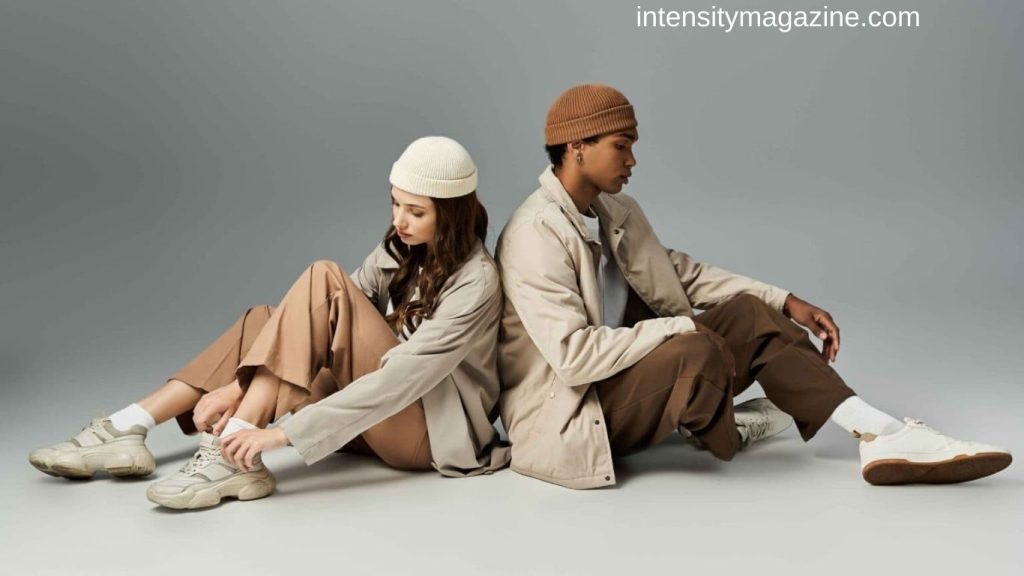Streetwear has become one of the most powerful fashion movements of the 21st century. What began as a grassroots style among urban youth in the 1990s is now a global trend embraced by celebrities, designers, and fashion houses alike. More than just clothing, streetwear represents comfort, individuality, and cultural identity—a lifestyle that continues to shape the way people dress worldwide.
The Origins of Streetwear
The birth of streetwear can be traced back to the late 1980s and early 1990s, when hip-hop culture in New York and underground designers in Harlem began reshaping the definition of style. One of the pioneers was Daniel “Dapper Dan” Day, whose Harlem boutique introduced bold, custom pieces that rejected traditional fashion rules. Influenced by his travels to Africa, Dapper Dan combined luxury logos with street aesthetics, laying the foundation for what would later be recognized as modern streetwear.
Initially dismissed by fashion insiders, streetwear was labeled a subcultural trend rather than a serious industry player. Yet, its strong connection to music, art, and youth rebellion ensured that it could not be ignored for long.
Skate and Surf Culture: Fueling the Movement
Beyond hip-hop, streetwear spread rapidly through skateboarding and surf communities. Young people in California and New York sought clothing that was practical, durable, and expressive. Baggy jeans, oversized hoodies, and graphic tees became everyday staples—designed for both performance and style. This blend of utility and attitude transformed streetwear from a local movement into a nationwide phenomenon.
Streetwear in the 1990s and 2000s
By the mid-1990s, streetwear was no longer just an underground statement. Brands like Stüssy and Supreme emerged as cultural icons, creating pieces that blurred the line between casualwear and identity. These labels spoke directly to a generation that valued authenticity over tradition, rejecting the rigid norms of high fashion.
The early 2000s solidified streetwear’s position in mainstream culture. Rap and hip-hop stars became unofficial ambassadors, showcasing the style on music videos and stages. What once seemed rebellious was now driving global fashion trends.
The Rise of Luxury Collaborations
Streetwear’s mainstream appeal opened doors to collaborations with some of the world’s most prestigious fashion houses. A turning point came in 2017, when Supreme partnered with Louis Vuitton, blending urban grit with Parisian elegance. The limited-edition capsule collection sold out instantly, proving that streetwear had not only entered high fashion—it was reshaping it.
Other collaborations followed, from Nike x Off-White to Adidas x Yeezy, creating a blueprint for the fusion of exclusivity, hype, and mass appeal. These partnerships elevated streetwear to luxury status, while still maintaining its grassroots energy.
From Rebellion to High Fashion
Ironically, what began as a rejection of elitist fashion has now become a pillar of it. Designers such as Virgil Abloh (Off-White, Louis Vuitton) and Demna Gvasalia (Balenciaga) introduced collections that combined oversized hoodies, sneakers, and deconstructed jackets with couture-level craftsmanship. High-fashion runways in Paris, Milan, and New York now regularly showcase pieces once dismissed as “casual wear.”
This transformation highlights streetwear’s adaptability. By staying true to its roots—comfort, freedom of expression, and cultural storytelling—streetwear has redefined what luxury can look like.
Global Influence of Streetwear
Streetwear is no longer just an American phenomenon; it has become a global cultural force. From Tokyo’s Harajuku district to London’s Soho streets, cities worldwide have adopted their own interpretations of the style.
Key global trends influenced by streetwear include:
- Oversized silhouettes – from jackets to trousers.
- Branded accessories – bags, caps, and sneakers carrying bold logos.
- Deconstructed basics – hoodies, tees, and denim redesigned with unique twists.
Branding, particularly through logos and embroidered patches, has become a vital part of identity and community within the streetwear scene. Wearing a specific label is not just fashion—it’s a statement of belonging.
The Power of Social Media
While runway shows traditionally dictated fashion trends, today social media drives streetwear culture. Platforms like Instagram, TikTok, and X (formerly Twitter) allow influencers and creators to amplify new drops instantly. Limited-edition collections sell out in minutes, driven by online hype and resale demand.
This digital-first approach reflects streetwear’s grassroots origins. Just as it began on the streets before entering fashion magazines, today it thrives on online communities before landing in luxury boutiques.
Commercialization and Mainstream Success
As demand skyrocketed, streetwear quickly transitioned from niche to mainstream. Both independent startups and global brands recognized its commercial potential. From fast-fashion retailers copying the aesthetic to luxury houses embracing collaborations, streetwear is now deeply embedded in every tier of the industry.
The resale market further fuels its popularity. Vintage streetwear and limited releases often fetch thousands of dollars, highlighting the genre’s enduring exclusivity. For many fans, finding a rare piece is both a fashion statement and an investment.
The Future of Streetwear
Streetwear has already proven it is here to stay, but what lies ahead? Several key trends are shaping its future:
Sustainability and Ethical Production
Consumers are increasingly aware of fashion’s environmental impact. Many emerging streetwear brands are adopting eco-friendly materials, upcycling, and ethical supply chains to align with modern values.
Continued Luxury Fusion
Streetwear and high fashion will continue to merge, with collaborations pushing the boundaries of exclusivity and innovation. Expect more runway-ready sneakers, reimagined basics, and collectible accessories.
Tech-Infused Fashion
From digital fashion shows to NFT clothing drops, technology is expanding streetwear into new arenas. Digital-first brands are experimenting with virtual fashion pieces that can be worn in the metaverse or online games.
Streetwear as Cultural Identity
At its core, streetwear has always been more than fashion—it’s about self-expression, rebellion, and community. Whether it’s a hoodie with a bold logo, a pair of limited-edition sneakers, or a thrifted jacket with personal flair, streetwear empowers people to express who they are.
As it continues to evolve, streetwear remains a mirror of society’s values—shifting from rebellion to luxury, and now toward sustainability and inclusivity.
Frequently Asked Questions:
What is streetwear and where did it originate?
Streetwear is a casual clothing style rooted in 1990s urban culture, influenced by hip-hop, skateboarding, and surf communities.
Who are some pioneers of streetwear fashion?
Designers like Dapper Dan, brands such as Stüssy and Supreme, and musicians from the hip-hop scene played key roles.
How did streetwear become part of high fashion?
Streetwear evolved through luxury collaborations, such as Supreme x Louis Vuitton, and the influence of designers like Virgil Abloh.
Why is branding so important in streetwear?
Logos, patches, and limited-edition drops create exclusivity, identity, and a sense of community within the streetwear culture.
How has social media impacted the growth of streetwear?
Platforms like Instagram and TikTok amplify hype around new releases, making streetwear a global trend and fueling resale markets.
What role does sustainability play in modern streetwear?
Many streetwear brands are adopting eco-friendly fabrics, upcycling, and ethical practices to align with consumer demand for sustainability.
Which fashion houses have embraced streetwear?
Luxury brands such as Louis Vuitton, Balenciaga, and Dior have incorporated streetwear aesthetics into their runway collections.
Conclusion
Streetwear’s journey from underground rebellion to couture dominance reflects its power to reshape the fashion landscape. What started in the streets of Harlem and the skate parks of California has grown into a global movement that balances comfort, identity, and luxury. With its continued fusion into high fashion, its embrace of sustainability, and its growing presence in digital spaces, streetwear is no longer just a trend—it’s a lasting cultural force. As long as people crave individuality and authenticity, streetwear will remain at the heart of fashion innovation.



